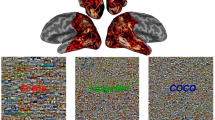Abstract
In this study, we have been developing a diminished reality system that allows users to experience becoming invisible human in order to reduce self-awareness and to improve their self-esteem. The system employs a camera to capture the user’s view and replaces his/her body images with background images in real time. These processed images are shown with a head mounted display to realize the immersive experience of becoming invisible human. The image inpainting is performed by a deep learning network. We also created a training and validation datasets and compared three networks. These networks are designed for image inpainting in this study. Moreover, we have made a hypothetical model of how psychological states and self-awareness will change when experiencing the developed system. In the future work, we are planning to conduct an experiment and confirm whether use of the system improves self-esteem. Also, we will investigate the process of changing the psychological state based on the hypothetical model by questionnaire surveys.
Access this chapter
Tax calculation will be finalised at checkout
Purchases are for personal use only
Similar content being viewed by others
References
Shirai, T.: Rethinking of educational practice targeting promotion of self-esteem. Memoirs Osaka Kyoiku Univ. 64(1), 147–156 (2015)
Mizuta, K., The effect of objective self awareness on self-evaluation. Japan. J. Exp. Social Psychol. 27(1), 59–67 (1987–1988)
Pathak, D., Krähenbühl, P., Donahue, J., Darrell, T., Efros, A.: Context encoders: feature learning by inpainting. In: Proceedings of the IEEE Conference on Computer Vision and Pattern Recognition, pp. 2536–2544 (2016)
Yang, C., Lu, X., Lin, Z., Shechtman, E., Wang, O., Li, H., High-resolution image inpainting using multi-scale neural patch synthesis. In: Proceedings of the IEEE Conference on Computer Vision and Pattern Recognition, pp. 6721–6729 (2017)
Seychell, D., Debono, C.J.: An approach for objective quality assessment of image inpainting results. In: 2020 IEEE 20th Mediterranean Electrotechnical Conference (MELECON), pp. 226–231 (2020)
Cai, N., Su, Z., Lin, Z., Wang, H., Yang, Z., Ling, B.W.-K.: Blind inpainting using the fully convolutional neural network. Visual Comput. 33(2), 249–261 (2015). https://doi.org/10.1007/s00371-015-1190-z
Salem, N.: A survey on various image inpainting techniques. Fut. Eng. J. 2(2), 1 (2021)
Glocker, B., Izadi, S., Shotton, J., Criminisi, A.: Real-time RGB-D camera relocalization. In: 2013 IEEE International Symposium on Mixed and Augmented Reality (ISMAR), pp. 173–179 (2013)
Hayakawa, A., et al.: Neural network libraries: a deep learning framework designed from engineers’ perspectives (2021)
Martini, M., Kilteni, K., Maselli, A., Sanchez-Vives, M.V.: The body fades away: investigating the effects of transparency of an embodied virtual body on pain threshold and body ownership. Sci. Rep. 5(13948), 1–8 (2015)
Mizuma, R.: A study of relationship between an ideal self and self-esteem, and consciousness to self-formation. Japan. J. Educ. Psychol. 46(2), 131–141 (1998)
Author information
Authors and Affiliations
Corresponding author
Editor information
Editors and Affiliations
Rights and permissions
Copyright information
© 2022 The Author(s), under exclusive license to Springer Nature Switzerland AG
About this paper
Cite this paper
Sasaki, M., Ishii, H., Ueda, K., Shimoda, H. (2022). Development of an Invisible Human Experience System Using Diminished Reality. In: Chen, J.Y.C., Fragomeni, G. (eds) Virtual, Augmented and Mixed Reality: Design and Development. HCII 2022. Lecture Notes in Computer Science, vol 13317. Springer, Cham. https://doi.org/10.1007/978-3-031-05939-1_33
Download citation
DOI: https://doi.org/10.1007/978-3-031-05939-1_33
Published:
Publisher Name: Springer, Cham
Print ISBN: 978-3-031-05938-4
Online ISBN: 978-3-031-05939-1
eBook Packages: Computer ScienceComputer Science (R0)




